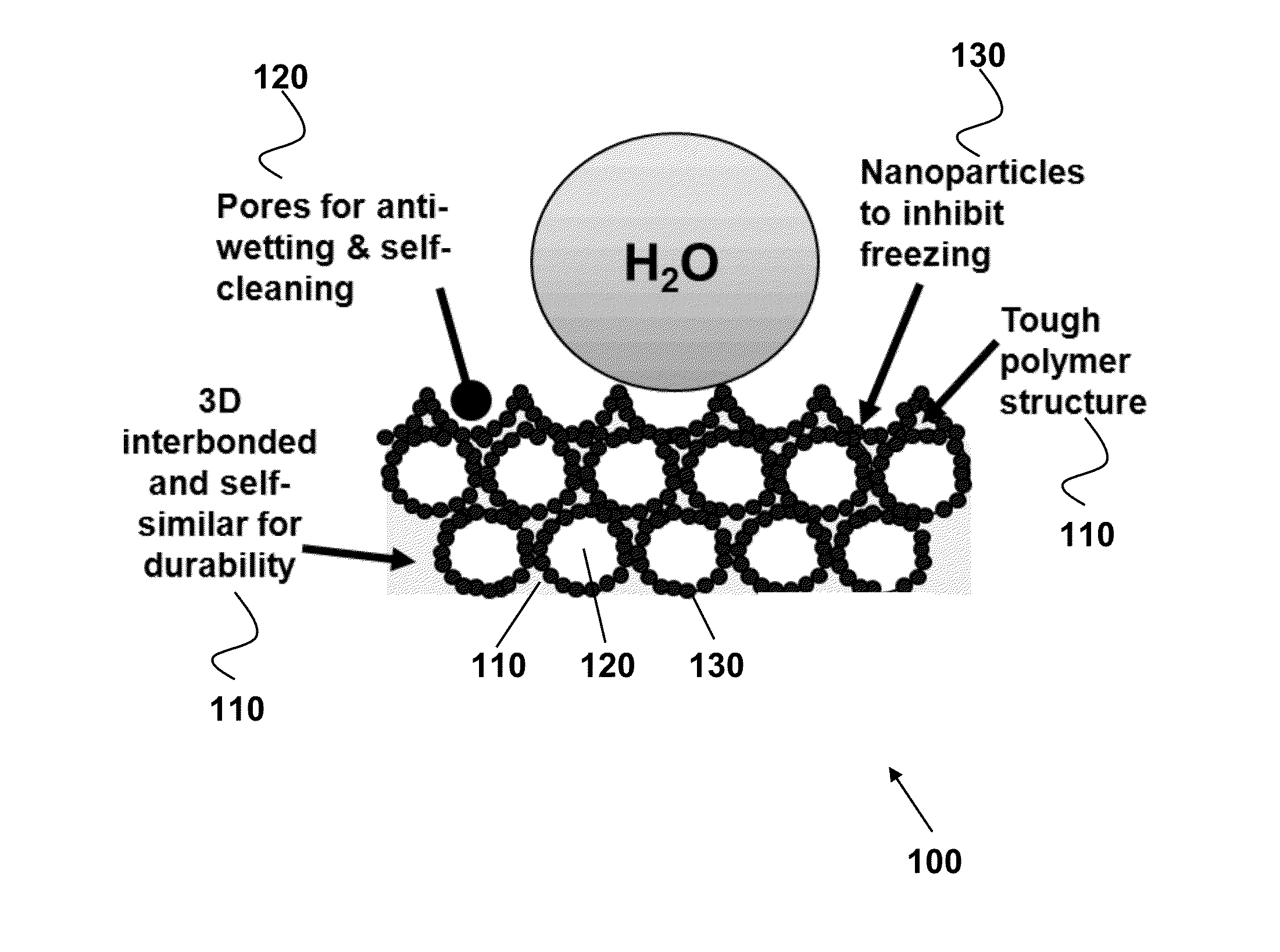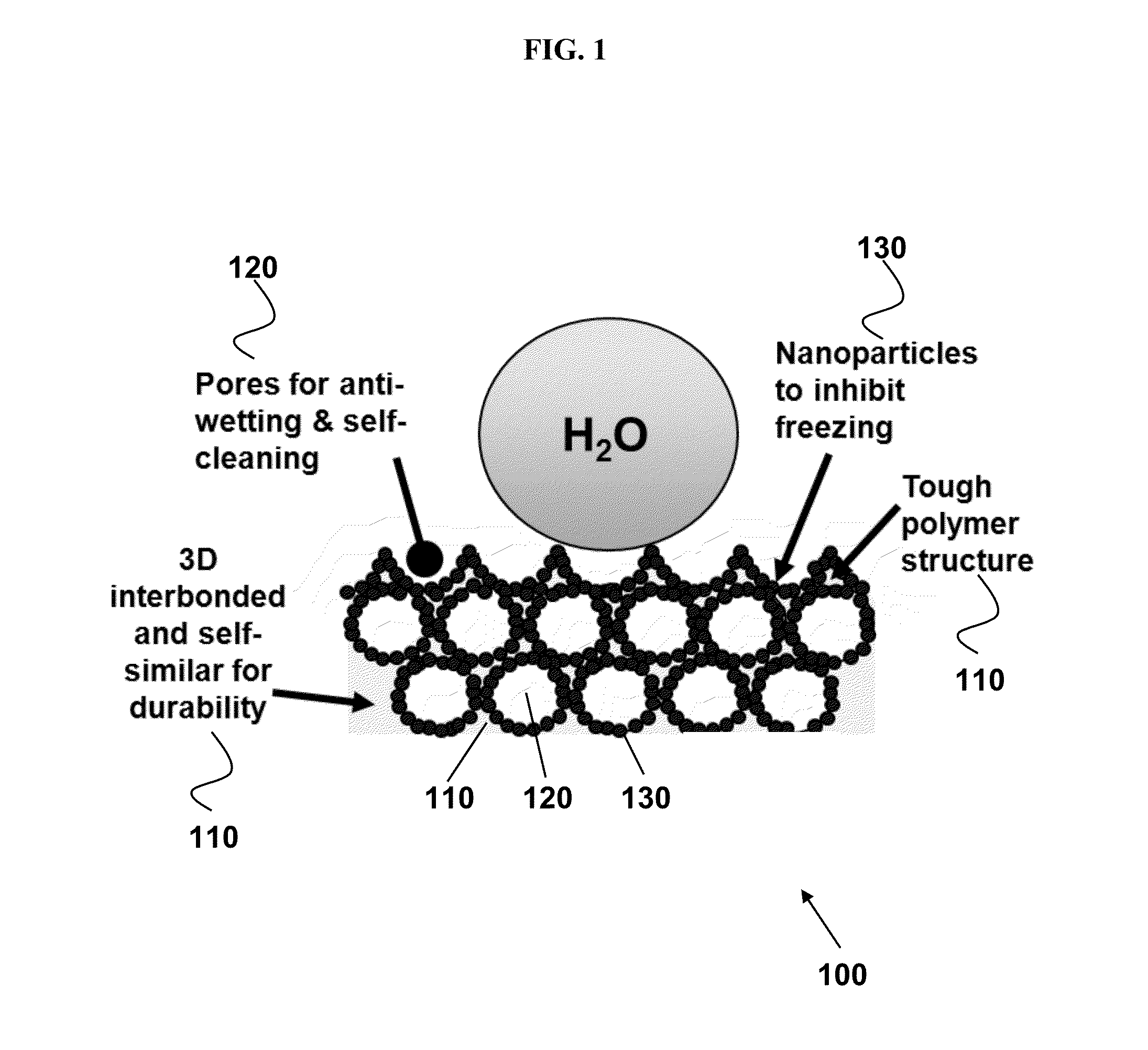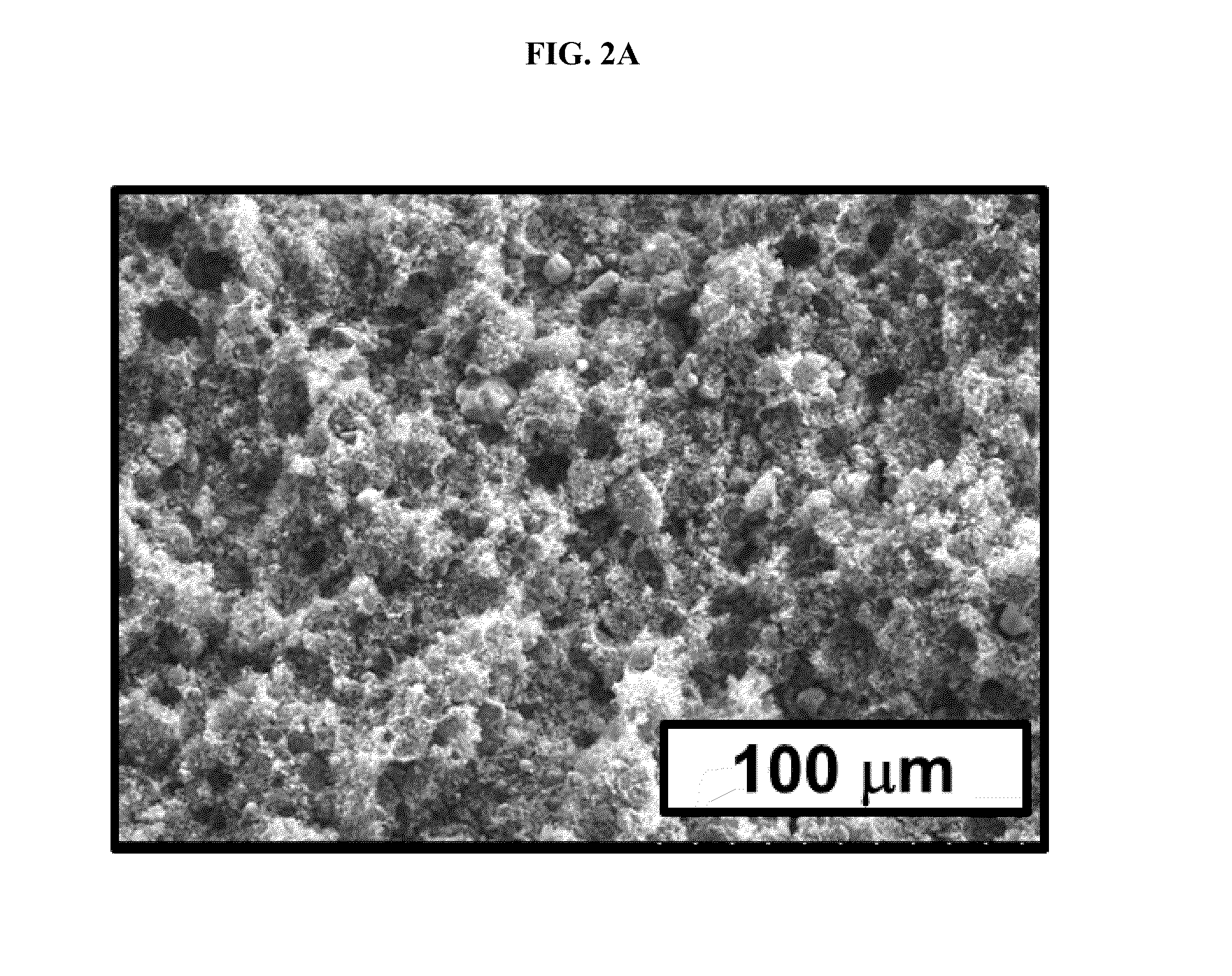Structural coatings with dewetting and Anti-icing properties, and processes for fabricating these coatings
a technology of structural coatings and anti-icing, which is applied in the field of durable, abrasion-resistant anti-icing coatings, can solve the problems of stalling the airfoil of aircraft, affecting the durability of materials, and affecting the performance of aircraft, so as to inhibit water wetting and promote surface roughness.
- Summary
- Abstract
- Description
- Claims
- Application Information
AI Technical Summary
Benefits of technology
Problems solved by technology
Method used
Image
Examples
example 1
[0144]This Example 1 demonstrates urea-formaldehyde—based anti-icing coatings using polystyrene discrete templates and hexamethyldisilazane-treated silica nanoparticles. DAP Weldwood® Plastic Resin Glue is a product of DAP Inc. (Baltimore, Md., US). Hexamethyldisilzane-treated silica is obtained from Gelest Inc. (Morrisville, Pa., US). Triton X-100 is provided by Sigma-Aldrich (St. Louis, Mo., US). Polystyrene colloids of 500 nm diameter are obtained from Bang's Laboratory, Inc. (Fishers, Ind., US).
[0145]Hexamethyldisilzane-treated silica (320 mg) is charged to a 50 mL plastic centrifuge tube combined with DI H2O (1.0 g). Triton X-100 (60 mg) is added next and the mixture vortexed for 1 minute to disperse the silica evenly in the fluid. In a separate 15 mL plastic centrifuge tube, DAP Weldwood® powder (1.0 g) is weighed out and combined with DI H2O (1.0 g) before transferring into the mixture of silica and water. The container is flushed with additional water (1.0 g) to remove remai...
example 2
[0149]The anti-wetting properties of the Example 1 coating are evaluated by measuring the contact angles between water and the coating. This data is shown in FIG. 4. The top image of FIG. 4 depicts the contact angle between water and the Example 1 coating. The bottom table of FIG. 4 shows the contact angles and roll off angles of aluminum substrate, polymer, and polymer+silica as different controls for the behavior of the substrate and of the coating materials without porosity, respectively.
[0150]The Example 1 coating exhibits a contact angle of about 150° and a roll off angle of less than 10°. Only the coating with templated porosity (Example 1) reveals a high contact angle with low roll off angle, and thus poor wetting by water, which is desired for the coating.
example 3
[0151]The freezing-point depression of the Example 1 coating is measured. The data is shown in FIG. 5, which indicates the freezing point of a water droplet on the Example 1 coating, compared to controls. Aluminum substrates and polymer+silica are controls for the behavior of the substrate and of the coating materials without porosity, respectively.
[0152]Only a coating with templated porosity and exposed nanoparticles (Example 1 coating) shows substantially reduced freezing temperatures for water.
[0153]The invention disclosed herein has various commercial and industrial applications. Aerospace applications involve anti-icing coatings for both passenger and unmanned aerial vehicles. Automotive applications include coatings that help reduce ice buildup on moving external parts such as louvers, coatings for car grills, and coatings for protecting radiators or heat exchangers from ice build-up. Strongly anti-wetting surfaces also have the benefit of rapidly removing dirt and debris when...
PUM
| Property | Measurement | Unit |
|---|---|---|
| surface roughness | aaaaa | aaaaa |
| size | aaaaa | aaaaa |
| thickness | aaaaa | aaaaa |
Abstract
Description
Claims
Application Information
 Login to View More
Login to View More - R&D
- Intellectual Property
- Life Sciences
- Materials
- Tech Scout
- Unparalleled Data Quality
- Higher Quality Content
- 60% Fewer Hallucinations
Browse by: Latest US Patents, China's latest patents, Technical Efficacy Thesaurus, Application Domain, Technology Topic, Popular Technical Reports.
© 2025 PatSnap. All rights reserved.Legal|Privacy policy|Modern Slavery Act Transparency Statement|Sitemap|About US| Contact US: help@patsnap.com



